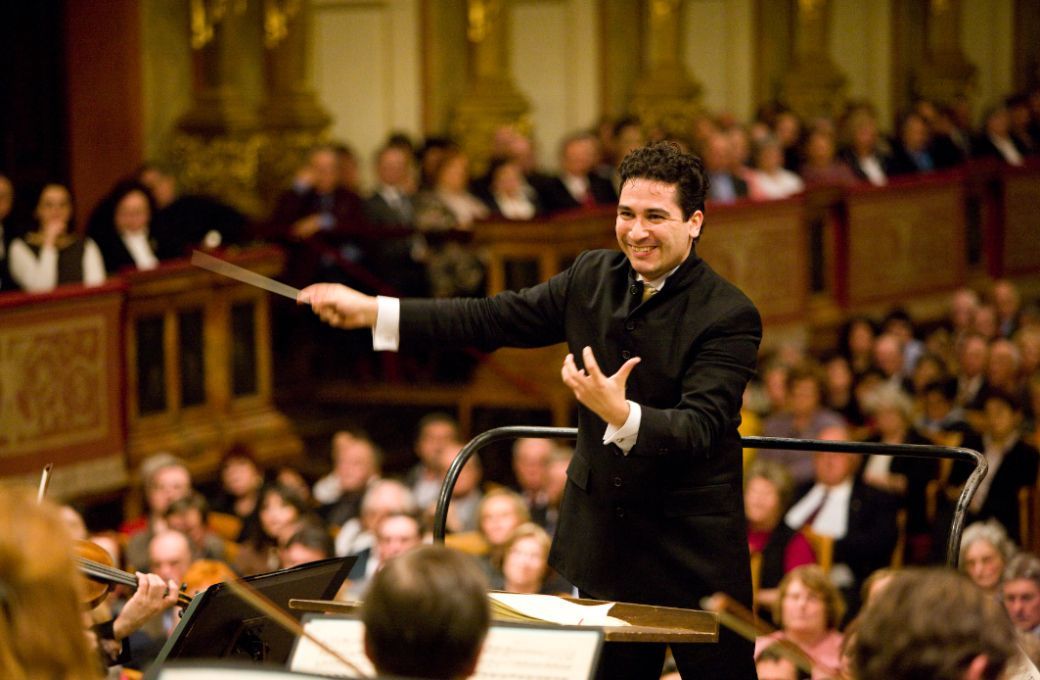Genius amongst the very young is a remarkable phenomenon. Interestingly, although precocious musicians are well represented, the other fine arts hardly get a look-in, which strengthens the argument that music really is an additional language and not simply a talent or skill. There was Mozart and there was Mendelssohn. And then there was Korngold.

The boy from Brno wrote seven pieces for piano at the tender age of thirteen. Called Märchenbilder (Fairytale Pictures), these were orchestrated under the supervision of Zemlinsky, but one was later lost. In a welcome return visit to the London Philharmonic Orchestra, Andrés Orozco-Estrada showed the extent of that early promise. The style hovers quite clearly between the two Strausses, Johann II and Richard, though I also noted hints of Saint-Saëns’ Danse macabre and even the influence of Mahler. Rather inexplicably, however, the conductor chose to perform only four of the pieces. Quite theatrical in design and redolent of atmosphere, there was a narrative feel to the individual melodic lines, with subtle changes in rhythm and colour, signal-like contributions from the trumpet, trombones adding depth, and strong unison horns echoing a similar passage heard earlier in the concerto. One shouldn’t of course expect too much of miniatures: the development of melodies was to come later, yet still mighty impressive for a young teenager.
As was the case in Korngold’s Violin Concerto in D major, given a warmly lyrical and expansive performance, with Arabella Steinbacher as soloist. Originally panned in The New York Times as a “Hollywood Concerto”, it is by no means certain that the film scores with which this work is associated predated the musical ideas: like Mozart and Rossini before him, Korngold was excellent at recycling. Deploying a lush nougaty tone, Steinbacher moved effortlessly in her exploration of the score from the high spinto soprano regions of her instrument to its muscular baritonal depths. The subtle shifts in mood were an engaging feature of this performance: from waves of wistfulness in the opening Moderato nobile, quite close to Walton, to the dream-like diaphanous suspensions of the slow movement, where at its close there was magically soft duetting between Steinbacher and the LPO’s fine woodwind soloists, and then an unbuttoned approach to the Finale, in which I was reminded as never before of American hoedown elements.
Orozco-Estrada’s Viennese training stood him in good stead for the opening work, the overture to Die Fledermaus, with buoyant rhythms and an airiness to textures, and more particularly in the concluding Der Rosenkavalier Suite by Richard Strauss. This pot-pourri concocted by Artur Rodziński in 1944 is essentially a speeded-up version of the entire opera, opening with a boisterous prelude suggestive of a night of passion enjoyed by the Marschallin and Octavian. The LPO’s horns whooped with joy, the timpani throbbed, the trombones palpitated and the strings swooned in their post-coital sense of rapture.
What this suite offers is an opportunity for detailed characterisation. In the Allegro molto sequence representing the “Presentation of the Silver Rose” there was an albescent trumpet, an aching oboe, a celestial flute and a splendid chamber-like intimacy from the front-desk strings. In the following “Baron Ochs’ Waltz” the clodhopping, galumphing qualities of the old rake were amply conveyed, and Alice Ivy-Pemberton in the leader’s chair contributed sweet-toned solos in the Moderato molto sostenuto section. Could there have been a touch more swagger in the more exuberant passages? Perhaps, but then there’s a fine dividing line between style and refinement on the one hand and overt vulgarity on the other. At any rate, Orozco-Estrada ensured there was much in the way of Schlagobers to enjoy.


